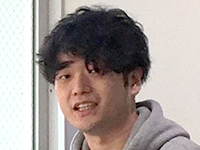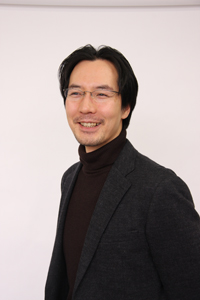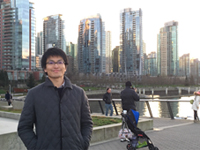Staff

Osumi Noriko
Professor
Academic and Professional Career
1979-1985 School of Dentistry, Tokyo Medical & Dental University
1985-1989 Graduate School of Dentistry, Tokyo Medical & Dental University
1989-1996 Research Associate, Department of Craniofacial Morphogenesis and Anomalies, Tokyo Medical
& Dental University
1996-1998 Associate Professor, National Institute of Neuroscience, National Center of Neurology &
Psychiatry
1998- Present position
2006- Special Advisor for Gender Equality (Tohoku University)
2008-2010 Distinguished Professor (Tohoku University)
2018-2024 Vice President (Tohoku University)
2025- Strategic Management Advisor
Award
1985 Nagao Award from School of Dentistry, Tokyo Medical & Dental University (for the top student on
graduation)
1992 Hatton Travel Award from International Association for Dental Research for the 70th General Session
of the IADR
2006 NISTEP Award from MEXT
Committees (only selected):
President, The Molecular Biology Society of Japan
Organizing member, Japanese Society for Cell Biology
Organizing member, Japanese Neuroscience Society
Editorial Board, Genes to Cells and others
Member, Peer Review Committee for Governmental Grants (MEXT)
Member, Advisory Committee for Life Science (MEXT)
Program Officer, Special Grants for Priority Research (JST)
Member, Committee for National Institute of Genetics
Member, Science Council of Japan
Associate Fellow of TWAS
Publication:
- A mutation of the Pax-6 gene in rat "small eye" was associated with migration defect of midbrain
crest cells. Nat Genet. 3(4), 299-304, 1993. This is the first paper reporting a mutation in Pax6 gene
in rat affect migration of specific population of neural crest cells contributing the face.
- Pax-6 is involved in specification of the hindbrain motor neuron subtype. Development. 124(15),
2961-2972, 1997. This paper has revealed the function of Pax6 in subtype specification of hindbrain
neurons.
- Role of Fabp7, a downstream gene of Pax6, in maintenance of neuroepithelialcells during early
embryonic development of the rat cortex. J Neurosci. 25(42), 9752-9761, 2005. This work demonstrates a
Pax6-downstream molecule Fabp7 (fatty acid binding protein 7) is essential for maintenance of neural
progenitor cells in the developing rat cortex, and has paved a way to our recent research on nutrition
in the brain.
- The neurogenesis-controlling factor, Pax6, inhibits proliferation and promotes maturation in murine
astrocytes. J Neurosci. 28(18), 4604-4612, 2008. In this paper covering an issue of J. Neurosci, we
report for the first time that Pax6 is important for maturation of astrocytes.
- Cyclin D2 in the basal process of neural progenitors is linked to non-equivalent cell fates. EMBO J.
31(8), 1879-1892, 2012. In this paper, a novel function of Cyclin D2, a key cell cycle regulator, is
identified in the mouse cortical development. This paper is chosen as " Have you seen?" essay for EMBO
J, and also mentioned in "Editor's Choice" in Science.
Curriculum Vitae(PDF)

Kikkawa Takako
Senior Lecturer
2004-2008 B.S., Saitama University, Saitama, Japan
2008-2010 M.S., Tohoku University School of Medicine, Sendai, Japan
2010-2013 Ph.D., Tohoku University School of Medicine, Sendai, Japan
2012-2014 Research Fellow of the Japan Society for the Promotion of Science
2014- Research Associate, Tohoku University School of Medicine, Sendai, Japan
Research:
Regulatory mechanisms of developing cortical formation
Publication:
- Kikkawa, T. Takahashi, M., *Osumi, N. Electroporation in the rodent embryonic brain using whole
embryo culture system. Current Protocols in Neuroscience, 2016, in press.
- Sakayori, N., Kikkawa, T., Tokuda, H., Kiryu, E., Yoshizaki, K., Kawashima, H., Yamada, T., Arai,
H., Kang, JX, Katagiri, H., Shibata, H., Innis, SM., Arita, M., Osumi, N. Maternal dietary imbalance
between omega-6 and omega-3 polyunsaturated fatty acids impairs neocortical development via epoxy
metabolites. Stem Cells, 34(2), 470-482, 2016.
- Takahashi, M., Makino, S., Kikkawa, T., Osumi, N. : Preparation of rat serum suitable for mammalian
whole embryo culture. J Vis Exp. 90, e51969, 2014.
- Kikkawa, T., Obayashi, T., Takahashi, M., Fukuzaki-Dohi, U, Numayama-Tsuruta, K., Osumi, N. : Dmrta1
regulates proneural gene expression downstream of Pax6 in the mammalian telencephalon. Genes Cells.
18(8), 636-649, 2013.
- Sakayori, N., Kikkawa, T., Osumi, N. : Reduced proliferation and excess astrogenesis of Pax6
heterozygous neural stem/progenitor cells. Neurosci Res. 74(2), 116-120, 2012.
List of Publications
from PubMed

Shohei Ochi
Assistant Professor
2009-2013 B.S., Tokyo University of Science, Noda, Japan
2013-2015 M.S., Kyoto University, Graduate school of Medicine, Kyoto, Japan
2017-2019 JSPS Research Fellow, Kyoto University, Graduate school of Medicine, Kyoto, Japan
2019-2020 Assistant Research Staff, Institute for Frontier Life and Medical Sciences, Kyoto University,
Kyoto, Japan
2020.4-9 Research Assistant, Tohoku University School of Medicine, Sendai, Japan
2020.10- Research Associate, Tohoku University School of Medicine, Sendai, Japan
Research:
Mechanism of how sexual difference influence to embryonic cortical development
Publication:
- 1. Ochi S, Manabe S, Kikkawa T, Ebrahimiazar S, Kimura R, Yoshizaki K, Osumi N.
A Transcriptomic Dataset of Embryonic Murine Telencephalon. Sci Data. 2024 Jun 5;11(1):586.
- Ochi S, Manabe S, Kikkawa T, Osumi N.
Thirty Years' History since the Discovery of Pax6: From Central Nervous System Development to
Neurodevelopmental Disorders. Int J Mol Sci. 2022 May 30;23(11):6115.
- Ochi S, Imaizumi Y, Shimojo H, Miyachi H, Kageyama R.
Oscillatory expression of Hes1 regulates cell proliferation and neuronal differentiation in the
embryonic brain. Development. 2020 Feb 26;147(4).
- Kageyama R, Ochi S, Sueda R, Shimojo H.
The significance of gene expression dynamics in neural stem cell regulation.
Proc Jpn Acad Ser B Phys Biol Sci. 2020;96(8):351-363.
- Taura A, Ohnishi H, Ochi S, Ebisu F, Nakagawa T, Ito J.
Effects of mouse utricle stromal tissues on hair cell induction from induced pluripotent stem cells.
BMC Neurosci. 2014 Nov 6;15:121.

Sharmin Naher
Assistant Professor
2012-2018 B.S., Jashore University of Science & Technology, Jashore, Bangladesh
2019-2021 M.S., Tohoku University, Graduate School of Life Sciences, Sendai, Japan
2021-2024 Ph.D., Tohoku University, Graduate School of Life Sciences, Sendai, Japan
Research:
Molecular mechanisms underlying the embryonic development of the cortex.
Publication:
- Kikkawa, T, Naher, S, & Osumi, N. Regulation of mRNA Localization and Translation in Brain Development: Implications for the Mechanism Leading to the Brain Evolution and Pathogenesis. In Neocortical Neurogenesis in Development and Evolution. Wiley. 2023, 649-663
- Nagai M, Iemura K, Kikkawa T, Naher S, Hattori S, Hagihara H, Nagata KI, Anzawa H, Kugisaki R, Wanibuchi H, Abe T, Inoue K, Kinoshita K, Miyakawa T, Osumi N, Tanaka K. Deficiency of CHAMP1, a gene related to intellectual disability, causes impaired neuronal development and a mild behavioural phenotype. Brain Commun. 2022, 4(5):fcac220.
- Naher, S, Aziz, MA, Akter, MI, Rahman, SM, Sajon, SR, Mazumder K. Anti-diarrheal activity and brine shrimp lethality bioassay of methanolic extract of Cordyline fruticosa (L.) A. Chev. leaves. Clin Phytosci. 2019, 5:15.
- Naher, S, Aziz, MA, Akter, MI, Rahman, SM, Sajon, SR. Analgesic, anti-inflammatory and anti-pyretic activities of methanolic extract of Cordyline fruticosa (L.) A. Chev. Leaves. J Res Pharm. 2019, 23(2):198-207.

Jasper Germeraad
Postdoctoral Fellow
2013-2017 BSc., HAN University of Applied Sciences, Nijmegen
2017-2019 Double Degree MSc., Tohoku University, Graduate School of Medicine, Sendai, Japan
2017-2019 Double Degree MSc., Maastricht University, Faculty of Health Medicine and Life Sciences, Maastricht, The Netherlands
2020-2025 Ph.D., Tohoku University, Graduate School of Medicine, Sendai, Japan
Research:
Testicular ageing and cell death
Publication:
- Germeraad J, Kikkawa T, Osumi N., Vitamin E supplementation prevents ferroptosis in round spermatids of aged mice. BioRxiv., October 2024
- Germeraad J, Keils L, M De Wit., Future Perspectives: Preventing Alzheimer’s Disease While Sleeping., Radboud Annals of Medical Students (RAMS)., 2017

Sara Ebrahimi Azar
Postdoctoral Fellow
2013-2017 B.S., Alzahra University, Department of Biotechnology, Tehran, Iran
2018-2020 M.S., Tohoku University, Graduate School of Medicine, Sendai, Japan
2020-2025 Ph.D., Tohoku University, Graduate School of Medicine, Sendai, Japan
Research:
Paternal effects on the brain development of fragile X syndrome mouse models.
Publication:
- Ebrahimiazar, S., Kikkawa, T., Minakuchi, Y., Miyashita, S., Manabe, S., Hoshino, M., Toyoda, A., Osumi, N. “A Transcriptomic Dataset of Embryonic Murine Telencephalon of Fmr1-Deficient Mice”, Sci Data (in press, 2025).
- Ochi, S., Manabe, S., Kikkawa, T., Ebrahimiazar, S., Kimura, R., Yoshizaki, K., Osumi, N. “A Transcriptomic Dataset of Embryonic Murine Telencephalon”, Sci Data 11, 586 (2024).
- Sakaji, K., Ebrahimiazar, S., Harigae, Y., Ishibashi, K., Sato, T., Yoshikawa, T., Atsumi, G., Sung, Ch., Saito, M. “MAST4 promotes primary ciliary resorption through phosphorylation of Tctex-1”, Life Science Alliance, 6(11):e202301947 (2023).

Inada Hitoshi
Part-time Lecturer
1996-1999 JSPS Research Fellow, Department of Biology, Faculty of Science, Kyushu University
1999-2005 Postdoctoral Fellow, Division of Biological Science, Graduate School of Science, Nagoya
University
2005-2006 Postdoctoral Fellow, Okazaki Institute for Integrative Bioscience, NIPS
2006-2008 Research Associate, Okazaki Institute for Integrative Bioscience, NIPS
2008-2012 Research Associate, Harvard University
2012-2020 Lecturer, Graduate School of Medicine, Tohoku University
2020-2023 Specially Appointed Associate Professor, Graduate School of Biomedical Engineering, Tohoku University
2023-2024 Research Associate, Department of Biochemistry & Cellular Biology, National Center of Neurology and Psychiatry
2023-present Part-time lecturer, Tohoku University Graduate School of Medicine
2025-present Visiting Researcher, Department of Biochemistry & Cellular Biology, National Center of Neurology and Psychiatry
2025-present Project Associate Professor, Headquarters for Co-Creation Strategy, National Institutes of Natural Sciences
Research:
Neuron - astrocyte interaction
Structural and functional study of fatty-acid binding proteins (FABPs) and TRP channels
Molecular mechanisms and physiological significance of thermosensation
Selected Publication:
- Rui Nian Jin, Hitoshi Inada*, Haruki Momma, Dongmei Ma, Keqing Yuan, Ryoichi Nagatomi* (2024) Impact of Carbon Dioxide Exposures on Sleep Latency among Healthy Volunteers: A Randomized Order, Paired Crossover Study, Evidence from the Multiple Sleep Latency Test. Environ Res, 262(Pt 1):11978. (Co-first and corresponding author)
- Saida Salima Nawrin, Hitoshi Inada*, Haruki Momma, and Ryoichi Nagatomi*, Examining physical activity clustering using machine learning revealed a diversity of 24-hour step-counting patterns. JASSB, 3:19. (Co-first and corresponding author)
- Laarni Grace Corales, Hitoshi Inada*, Yuji Owada, and Noriko Osumi (2024) Fatty acid preference for beta-oxidation in mitochondria of murine cultured astrocytes, Genes Cells, In press. (Corresponding author)
- Saida Salima Nawrin, Hitoshi Inada*, Haruki Momma, and Ryoichi Nagatomi* (2024) Twenty-four-hour physical activity patterns associated with depressive symptoms: A cross-sectional study using big data-machine learning approach. BMC Public Health, 24(1):1254. (Co-first and corresponding author)
- Longfei Li, Haruki Momma, Haili Chen, Saida Salima Nawrin, Yidan Xu, Hitoshi Inada*, Ryoichi Nagatomi* (2024) Dietary patterns associated with the incidence of hypertension among adult Japanese males: Application of machine learning to a cohort study. Eur J Nut, 63(4):1293-1314. (Corresponding author)
- Lingling Mai, Hitoshi Inada, Noriko Osumi* (2023) Whole-brain mapping of neuronal activity evoked by maternal separation in neonatal mice: An association with ultrasound vocalization. Neuropsychopharmacol Rep, 43(2):239-248.
- Lingling Mai, Hitoshi Inada, Ryuichi Kimura, Kouta Kanno, Takeru Matsuda, Ryosuke O. Tachibana, Valter Tucci, Fumiyasu Komaki, Noboru Hiroi, Noriko Osumi* (2022) Advanced paternal age diversifies individual trajectories of vocalization patterns in neonatal mice. iScience, 25 (8): 104834.
- Rui Nian Jin, Hitoshi Inada, János Négyesi, Daisuke Ito, Ryoichi Nagatomi* (2022) Carbon dioxide effects on daytime sleepiness and EEG signal: A combinational approach using classical frequentist and Bayesian analyses. Indoor Air, 32 (6): e13055. (Co-first author)
- Laarni Grace Corales, Hitoshi Inada* Kotaro Hiraoka, Shun Araki, Shinya Yamanaka, Takako Kikkawa, Noriko Osumi (2022) The subcommissural organ maintains features of neuroepithelial cells in the adult mouse. J Anat, 241 (3):820-830. (Corresponding author)
- Kotaro Hiraoka, Hitoshi Inada*, Kazuhiko Yanai, Noriko Osumi (2020) Bone Morphogenetic Proteins Inhibit Ciliogenesis of Ependymal Cells in Vitro. Tohoku J Exp Med. 252 (3):199-208. (Corresponding author)
- Hitoshi Inada, Keiko Numayama-Tsuruta, Kentaro Mochizuki, Makiko Sasaki-Hoshino, and Noriko Osumi*, (2018) Pax6-dependent regulation of the rat Fabp7 promoter. Genes Cells, 23:702-714.
List of Publications from PubMed
Self-introduction:
I'm interested in the relationship between structure and function of biological macromolecules,
especially temperature sensitve proteins. I have various backgrounds including molecular biology,
behavioral genetics, electrophysiology, biochemistry, and X-ray crystallography. In Osumi lab, I'm
working on the research projects for analysis of the neuron - astrocyte interaction in mammalian brain
using these backgrounds.

Kentaro Mochizuki
Part-time Lecturer
2002-2006 B.S., Hokkaido University, Sapporo, Japan
2006-2008 M.S., Tohoku University School of Medicine, Sendai, Japan
2008-2012 Ph.D., Tohoku University School of Medicine, Sendai, Japan
2009-2012 Research Fellow of the Japan Society for the Promotion of Science (JSPS)
2012-2017 Assistant Professor, Institute of Development, Aging and Cancer (IDAC), Tohoku University,
Sendai, Japan
2017-present Assistant Professor, Tohoku University School of Medicine, Sendai, Japan
2012-2017 Assistant Professor, Institute of Development, Aging and Cancer (IDAC), Tohoku University, Sendai, Japan
2017-2018 Assistant Professor, Tohoku University School of Medicine, Sendai, Japan
2018- Senior Researcher/Research Associate, Life Sciences Institute, University of British Columbia, Vancouver, Canada
Research:
Epigenomic regulation during germline development
Publication:
- Mochizuki K, Sharif J, Shirane K, Uranishi K, Bogutz AB, Janssen SM, Suzuki A, Okuda A, Koseki H, Lorincz MC. Repression of germline genes by PRC1.6 and SETDB1 in the early embryo precedes DNA methylation-mediated silencing. Nature Communications 12(1):7020, 2021.
- Yoshizaki K, Kimura R, Kobayashi H, Oki S, Kikkawa T, Mai L, Koike K, Mochizuki K, Inada H, Matsui Y, Kono T, Osumi N. Paternal age affects offspring via an epigenetic mechanism involving REST/NRSF. EMBO Reports 22(2):e51524, 2021.
- Tatehana M, Kimura R, Mochizuki K, Inada H, Osumi N. Comprehensive histochemical profiles of histone modification in male germline cells during meiosis and spermiogenesis: Comparison of young and aged testes in mice. PLoS ONE 15(4):e0230930, 2020.
- An Y, Sekinaka T, Tando Y, Okamura D, Tanaka K, Ito-Matsuoka Y, Takehara A, Mochizuki K, Yaegashi N, Matsui Y. Derivation of pluripotent stem cells from nascent undifferentiated teratoma. Developmental Biology 446(1):43-55, 2019.
- Mochizuki K, Tando Y, Sekinaka T, Otsuka K, Hayashi Y, Kobayashi H, Kamio A, Ito-Matsuoka Y, Takehara A, Kono T, Osumi N, Matsui Y. SETDB1 is essential for mouse primordial germ cell fate determination via ensuring BMP signaling. Development 145(23):dev.164160, 2018.
- Tatsumi D, Hayashi Y, Endo M, Kobayashi H, Yoshioka T, Kiso K, Kanno S, Nakai Y, Maeda I, Mochizuki K, Tachibana M, Koseki H, Okuda A, Yasui A, Kono K, Matsui Y. DNMTs and SETDB1 function as co-repressors in MAX-mediated repression of germ cell-related genes in mouse embryonic stem cells. PLoS ONE 13(11):e0205969, 2018.
- Inada H, Numayama-Tsuruta K, Mochizuki K, Sasaki-Hoshino M, Osumi N. Pax6-dependent regulation of the rat Fabp7 promoter activity. Genes to Cells 23(8):702-714, 2018.
- Mochizuki K, Hayashi Y, Sekinaka T, Otsuka K, Ito-Matsuoka Y, Kobayashi H, Oki S, Takehara A, Kono T, Osumi N, Matsui Y. Repression of somatic genes by selective recruitment of HDAC3 by BLIMP1 is essential for mouse primordial germ cell fate determination. Cell Reports 24(10):2682-2693.e6, 2018.
- Gu W, Mochizuki K, Otsuka K, Hamada R, Takehara A, Matsui Y. Dnd1-mediated epigenetic control of teratoma formation in mouse. Biology Open 7(1):bio032318, 2018.
- Aoki N, Mochizuki K, Matsui Y.
DNA methylation state of 5’-upstream region of Fthl17 regulates its differential expression levels in
lung cancer cells and in germ line stem cells.
PLoS ONE 12(2):e0172219, 2017.
- Kudo T, Kanetaka H, Mochizuki K, Tominami K, Nunome S, Abe G, Kosukegawa H, Abe T, Mori H, Mori K,
Takagi T, Izumi S.
Induction of Neurite Outgrowth in PC12 Cells treated with Temperature-Controlled Repeated Thermal
Stimulation.
PLoS ONE 10(4):e0124024, 2015.
- Matsui Y, Mochizuki K.
A current view of the epigenome in mouse primordial germ cells.
Molecular Reproduction and Development 81(2):160-170, 2014.
- Kobayashi H, Sakurai T, Miura F, Imai M, Mochiduki K, Yanagisawa E, Sakashita A, Wakai T, Suzuki Y,
Ito T, Matsui Y, Kono T.
High-resolution DNA methylome analysis of primordial germ cells identifies gender-specific
reprogramming in mice.
Genome Research 23(4):616-627, 2013.
- Okamura D, Mochizuki K, Taniguchi H, Tokitake Y, Ikeda M, Yamada Y, Tournier C, Yamaguchi S, Tada T,
Scholer HR, Matsui Y.
REST and its downstream molecule Mek5 regulate survival of primordial germ cells.
Developmental Biology 372(2):190-202, 2012.
- Mochizuki K, Tachibana M, Saitou M, Tokitake Y, Matsui Y.
Implication of DNA demethylation and bivalent histone modification for selective gene regulation in
mouse primordial germ cells.
PLoS ONE 7(9):e46036, 2012.
- Mochizuki K, Matsui Y.
Epigenetic profiles in primordial germ cells: global modulation and fine tuning of the epigenome for
acquisition of totipotency.
Development, Growth & Differentiation 52(6):517-525, 2010.
- Higaki S, Mochizuki K, Akashi Y, Yamaha E, Katagiri S, Takahashi Y.
Cryopreservation of primordial germ cells by rapid cooling of whole zebrafish (Danio rerio)
embryos.
Journal of Reproduction and Development 56(2):212-218, 2010.
- Higaki S, Mochizuki K, Baba H, Akashi Y, Yamaha E, Katagiri S, Takahashi Y.
Feasibility of cryopreservation of zebrafish (Danio rerio) primordial germ cells by whole embryo
freezing.
The Japanese Journal of Veterinary Research 57(2):119-128, 2009.
List of
Publications from PubMed












